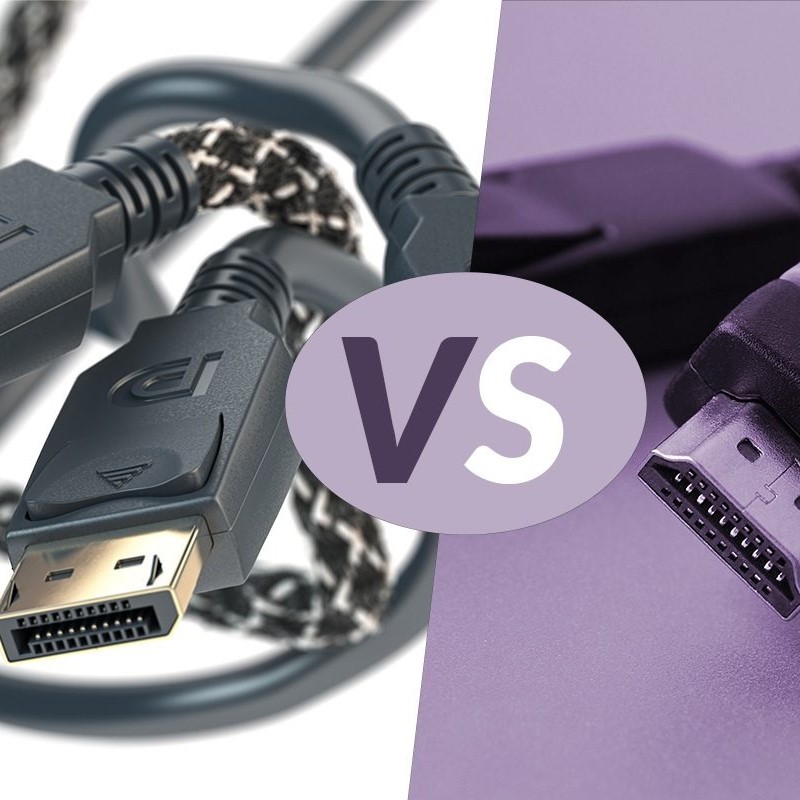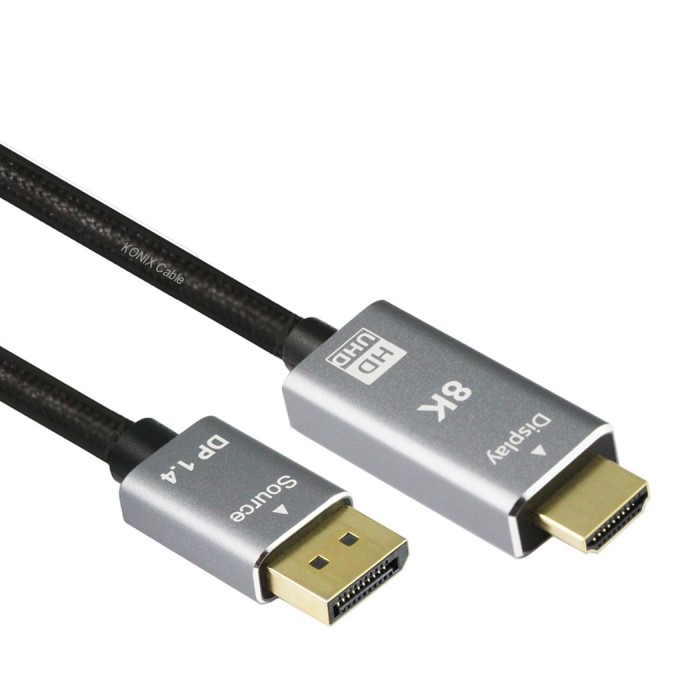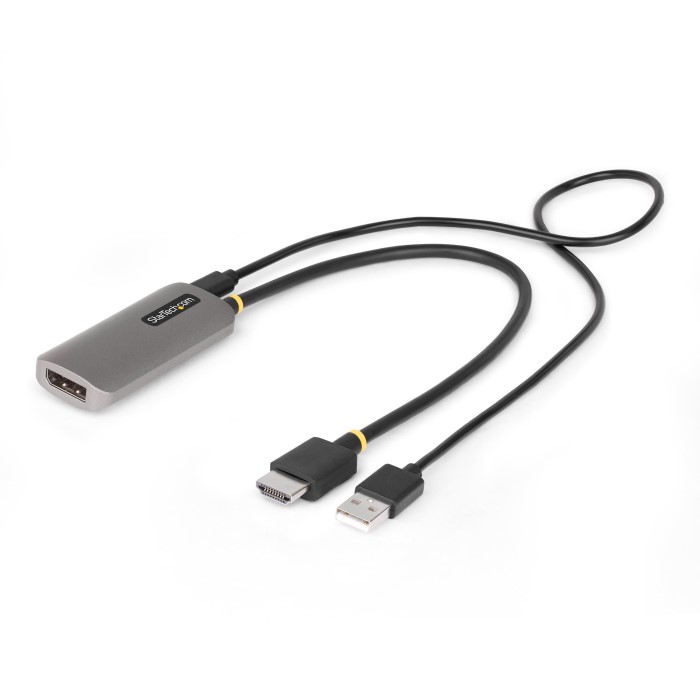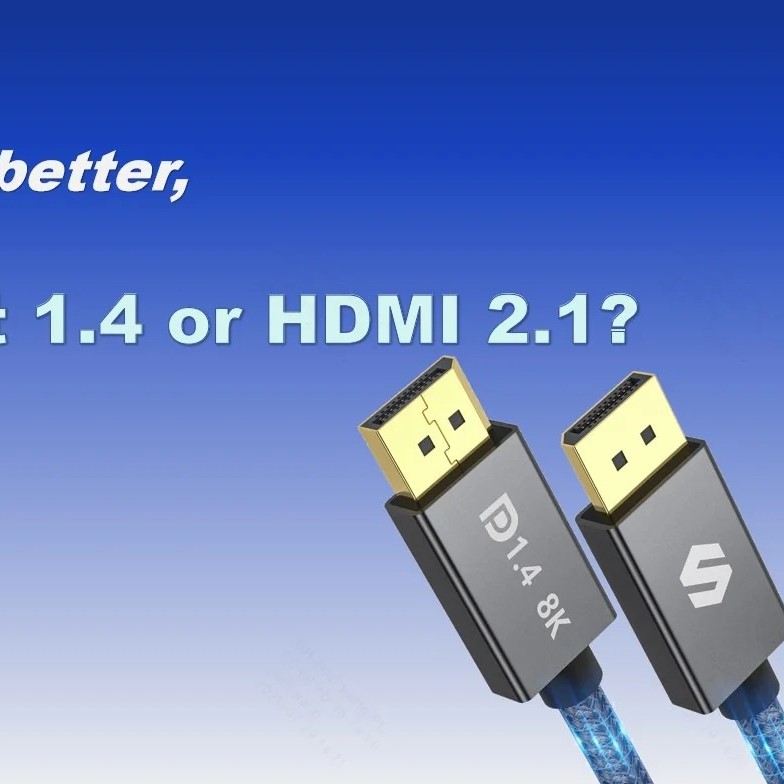Contents
- 1 Introduction to DisplayPort 1.4 and HDMI 2.1
- 2 Key Features of DP 1.4
- 3
- 4 Key Features of HDMI 2.1
- 5 Comparing Bandwidth and Resolution Support
- 6
- 7 Evaluating Refresh Rates for Competitive Gaming
- 8
- 9 Considerations for Multi-Monitor Setups
- 10 Impact on Gaming Graphics and Performance
- 11
- 12 Future-Proofing Your Gaming Setup With DP 1.4 or HDMI 2.1
- 13 Conclusion: Making the Right Choice for Your Gaming Needs
Introduction to DisplayPort 1.4 and HDMI 2.1
When upgrading gaming setups, ‘dp 1.4 vs hdmi 2.1’ is a common debate. Both DisplayPort 1.4 (DP 1.4) and High-Definition Multimedia Interface 2.1 (HDMI 2.1) are primary standards for connecting display devices to sources like computers and gaming consoles. These interfaces transfer video and audio from the source to the display.
DP 1.4, launched in 2016, includes features like Display Stream Compression and support for 8K resolution at 60Hz. It’s common in computer monitors designed for gaming. HDMI 2.1, which came later in 2017, raises the stakes with capabilities such as higher bandwidth, enabling 8K at 120Hz and 4K at 240Hz.
Choosing the right cable depends on the specs of your hardware, game requirements, and your own aspirations for a future-proofed setup. This section will delve into each interface’s features, support, refresh rates, and impact on gaming performance to help you make an informed decision.
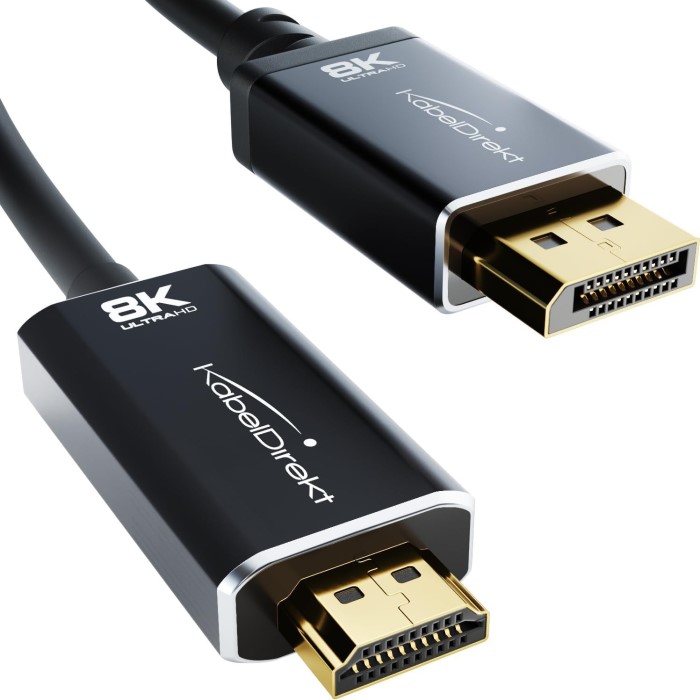
Key Features of DP 1.4
DisplayPort 1.4, or DP 1.4, offers gamers several notable features. With support for high resolutions, it can display 8K content at a smooth 60Hz refresh rate. It’s important for gamers who crave sharp visuals in their gaming experience. DP 1.4 also supports 4K resolution at an impressive 120Hz, making it suitable for high-definition gaming.
DP 1.4 introduces Display Stream Compression (DSC), a major upgrade for image quality. DSC allows for higher resolutions and refresh rates without a loss in visual fidelity. This is key for complex game graphics with detailed textures and effects.
Moreover, DP 1.4 provides a High Bit Rate 3 (HBR3) connection. This feature offers a high bandwidth of up to 32.4 Gbps. It means faster data transfer and reduced latency, which are critical for fast-paced games.
Another advantage is its support for multiple display streams. Gamers can run several monitors simultaneously. It is ideal for immersive multi-monitor gaming setups.
Lastly, DP 1.4’s forward error correction ensures a reliable gaming experience. It reduces the risk of image corrupting glitches during critical gameplay moments. Overall, DP 1.4 provides essential functionalities to meet the demands of modern gaming.
Key Features of HDMI 2.1
When considering ‘dp 1.4 vs hdmi 2.1’, HDMI 2.1 presents its own set of impressive features. As the successor to earlier HDMI standards, it represents a significant leap forward in technology, especially for high-performance gaming.
HDMI 2.1 boasts an incredible bandwidth capability of up to 48 Gbps. This high bandwidth allows for the transmission of 8K resolution at a stunning 120Hz and 4K at an ultra-smooth 240Hz. Such specs cater to gamers seeking the ultimate visual experience with fluid motion and sharp details.
Another standout feature of HDMI 2.1 is its support for Dynamic HDR. This means that each frame can display a different range of depth, detail, brightness, and color, enhancing the overall visual impact of games.
In addition to these, HDMI 2.1 supports Variable Refresh Rate (VRR). VRR helps eliminate stutter and tear, common issues that can disrupt gameplay, providing a more immersive gaming experience.
For gamers with audio aspirations, HDMI 2.1 includes enhanced audio return channel (eARC). eARC allows for the use of advanced audio formats, contributing to an all-around sensory gaming session.
Lastly, HDMI 2.1 introduces Auto Low Latency Mode (ALLM) and Quick Frame Transport (QFT). These features reduce input lag and latency, which means faster response times for gaming that demands precision.
Given its advanced capabilities, HDMI 2.1 is geared towards gamers looking for the highest quality visuals and performance for their next-gen consoles and PCs.
Comparing Bandwidth and Resolution Support
When analyzing ‘dp 1.4 vs hdmi 2.1’, bandwidth and resolution are key factors. Bandwidth refers to the maximum amount of data transmitted per second. Higher bandwidth means better support for higher resolutions and refresh rates.
DisplayPort 1.4 offers a bandwidth of 32.4 Gbps. This supports up to 8K resolution at 60Hz or 4K at 120Hz. HDMI 2.1 goes even further with a bandwidth of 48 Gbps. It can handle 8K at 120Hz and 4K at an astounding 240Hz.
For gamers, high resolution can bring more detail and clarity to the gaming world. However, the need for higher resolutions like 8K is more future-oriented. Most current games and monitors favor 4K, which both DP 1.4 and HDMI 2.1 handle well.
If you are a professional gamer or a gaming enthusiast desiring the highest detail, HDMI 2.1 might be the better option. It’s built to accommodate even more data-heavy visuals. For users with a focus on strong performance at 4K resolution, with future 8K in mind, DP 1.4 is still highly capable.
In conclusion, both DP 1.4 and HDMI 2.1 offer robust resolution support for gamers. HDMI 2.1 offers greater bandwidth, which is more future-proof. DP 1.4 is still a solid choice, especially if your current gaming needs are met with 4K at 120Hz.
Evaluating Refresh Rates for Competitive Gaming
When choosing between DP 1.4 and HDMI 2.1, refresh rates are critical for gamers. Refresh rate is how often your screen updates with new images per second. Higher refresh rates mean smoother images, which can provide a competitive edge in gaming.
DP 1.4 supports up to 4K resolution at 120Hz, which is ample for most gamers. This level of refresh rate makes fast-paced games look fluid, reducing motion blur. It suits those who value responsiveness in their games.
HDMI 2.1, however, steps up the game. It allows for 4K gaming at a staggering 240Hz and even 8K at 120Hz. This results in ultra-smooth transitions, virtually eliminating screen tearing. These features can be a turning point for competitive gamers who rely on split-second reactions.
The superior refresh rates of HDMI 2.1 make it a more future-proof choice. As more games and monitors begin to support higher refresh rates, HDMI 2.1 will enable users to experience these advancements.
To summarize, both DP 1.4 and HDMI 2.1 cater well to high refresh rates. However, HDMI 2.1 gives serious gamers that extra advantage with higher potential refresh rates. Ultimately, the decision lies in whether you require the extreme smoothness and future capabilities of HDMI 2.1 or the already impressive performance of DP 1.4.
Considerations for Multi-Monitor Setups
When it comes to creating a multi-monitor gaming setup, the choice between DP 1.4 and HDMI 2.1 becomes crucial. Multi-monitor arrangements require a setup that can handle multiple video outputs without compromising quality or performance.
DP 1.4 shines with its capability to support multiple display streams. This makes it an excellent choice for gamers who want to expand their field of view across several screens. With DP 1.4, you can daisy-chain monitors, which simplifies the cabling needed and helps maintain a cleaner gaming area.
On the other hand, HDMI 2.1’s strength lies in its ability to deliver high bandwidth for each connected display. Although it doesn’t support daisy-chaining, HDMI 2.1 ensures that each monitor receives maximum data for the best possible visual fidelity. Gamers would need to make sure their setup includes enough HDMI ports to connect multiple screens.
When planning your multi-monitor setup, consider not just the cable type but also the GPU’s capabilities. Ensure your graphics card supports the desired number of displays and resolutions for DP 1.4 or HDMI 2.1. Always check the specs to make sure your system can handle your multi-monitor aspirations without a hitch.
To recap, multi-monitor setups thrive with DP 1.4’s daisy-chaining feature and HDMI 2.1’s high bandwidth per display. Balance your preference for setup simplicity with your need for maximum performance to decide which interface suits your gaming setup best.
Impact on Gaming Graphics and Performance
The debate between DP 1.4 and HDMI 2.1 significantly affects gaming graphics and performance. Understanding how each interface influences the display of graphics and overall gameplay smoothness is crucial for gamers looking to optimize their experience.
1. Graphics Quality with DP 1.4
- High-Definition Visuals: DP 1.4 is known for delivering high-definition graphics at consistent frame rates. Gamers can enjoy stunning visuals that maintain clarity and detail throughout their gaming sessions.
- Resolution Support: This technology supports impressive resolutions, including 8K at 60Hz and 4K at 120Hz. With such capabilities, players can immerse themselves in sharp and detailed images, crucial for fully enjoying visually rich games.
- Importance for Gameplay: The clarity provided by DP 1.4 is essential, especially in competitive gaming, where spotting enemies or detecting environmental nuances can lead to victory or defeat.
2. Enhanced Graphics with HDMI 2.1
- Next-Level Graphic Fidelity: HDMI 2.1 pushes the limits of graphic fidelity even further. It can drive 8K resolution at 120Hz and 4K at an astounding 240Hz, allowing games to reach their maximum visual potential.
- Dynamic HDR Technology: This interface features Dynamic HDR, which enhances image quality by adjusting brightness and contrast on a scene-by-scene basis. The result is vivid colors and dynamic visuals that make gaming environments come alive.
- Immersive Experience: The high resolution and exceptional refresh rates elevate the gaming experience, making it ideal for players who demand top-tier graphics.
3. Performance Implications of Refresh Rates
- Smoother Gameplay Experience: High refresh rates are pivotal in delivering smoother gameplay. They ensure that the display updates images quickly, contributing to a fluid and responsive gaming experience.
- Impact on Fast-Paced Games: For gamers engaged in fast-paced titles, DP 1.4’s ability to provide high refresh rates is invaluable. The smoothness it offers can enhance performance, allowing players to react swiftly.
- HDMI 2.1 for Ultimate Fluidity: Conversely, HDMI 2.1 is designed for those who seek the utmost fluidity. Its ability to support higher refresh rates means gamers can enjoy unparalleled precision, especially in competitive environments.
4. Advanced Features Enhancing Performance
- Innovations in Data Compression: Both DP 1.4 and HDMI 2.1 incorporate advanced features such as Display Stream Compression (DSC) to enhance gameplay. DSC allows systems to maintain high-quality image resolution without lag, ensuring that performance is not compromised.
- Variable Refresh Rate (VRR): This technology helps synchronize the display’s refresh rate with the game’s frame rate, reducing screen tearing and stuttering. Both interfaces support VRR, providing gamers with a consistently smooth and enjoyable experience.
Future-Proofing Your Gaming Setup With DP 1.4 or HDMI 2.1
As gaming technology evolves, choosing a display interface that stands the test of time is crucial. Future-proofing your gaming setup means considering not just your current needs but also anticipating advancements in gaming tech. Whether you choose DP 1.4 or HDMI 2.1, each offers benefits and longevity in different aspects.
For those leaning towards DisplayPort 1.4, its support for high resolutions and refresh rates offers a solid foundation for future games. DP 1.4’s compatibility with daisy-chaining also promises easier expansion with multi-monitor setups. It’s a strong contender if you prioritize versatility and a clutter-free gaming space.
In contrast, HDMI 2.1’s higher bandwidth paves the way for unmatched performance levels in time to come. As games demand more data for hyper-realistic visuals and smoother gameplay, HDMI 2.1’s capabilities will shine. If you aim to push the limits with 8K resolution or want the lowest latency for competitive play, HDMI 2.1 is the forward-looking choice.
When planning for the future, also consider the pace of tech advancements and your upgrade cycle. Not all gamers will need the extreme power of HDMI 2.1 immediately, making DP 1.4 a practical choice for many. However, for gamers investing in the latest hardware, adopting HDMI 2.1 could mean fewer upgrades down the line.
Ultimately, both DP 1.4 and HDMI 2.1 can future-proof your gaming setup to a large extent. Assess your enthusiasm for cutting-edge tech and balance it against the practicality of current standards. Your decision will define your gaming experience for years to come.
Conclusion: Making the Right Choice for Your Gaming Needs
Deciding between dp 1.4 vs hdmi 2.1 for your gaming setup is not easy. It’s a choice that hinges on your current hardware and future gaming desires. Let’s quickly recap the main points to aid your decision.
DP 1.4 shines in high-resolution gameplay at stable refresh rates. It supports 8K at 60Hz or 4K at 120Hz. With features like DSC and HBR3, it promises crisp visuals and speedy data transfer. Its multi-monitor support is also solid, with easy daisy-chaining for a clean setup.
HDMI 2.1 excels with its higher bandwidth and refreshing rates. It delivers 8K at 120Hz and 4K at a smooth 240Hz. The interface’s Dynamic HDR offers vivid colors and depth in games. Low latency features like ALLM and QFT are key for fast-paced action.
Think about the games you play and the display tech you use. If 4K gaming is your goal and you have a multi-monitor vision, DP 1.4 is a strong match. It meets today’s standards well. But if you’re aiming for the ultimate in graphics and have next-gen gear, HDMI 2.1 might be better.
In conclusion, both dp 1.4 vs hdmi 2.1 will elevate your gaming experience. Weigh the pros and cons with your gaming lifestyle and what you expect to play in the future. Your choice will set the stage for countless hours of immersive gaming. Choose wisely to ensure your setup stays competitive and enjoyable for years to come.
